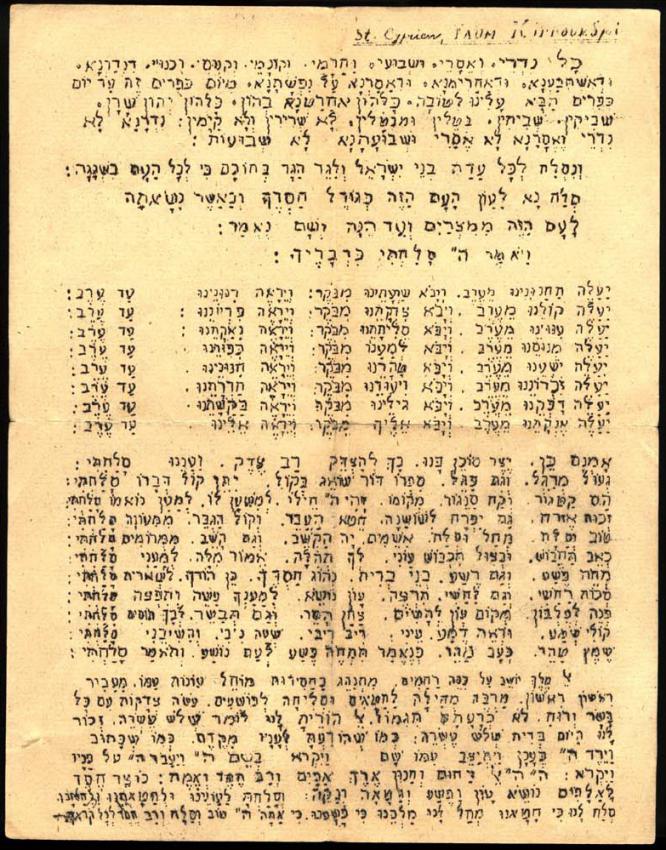
Yad Vashem Artifacts Collection
Gift of Martin Friedman, Norwich, England

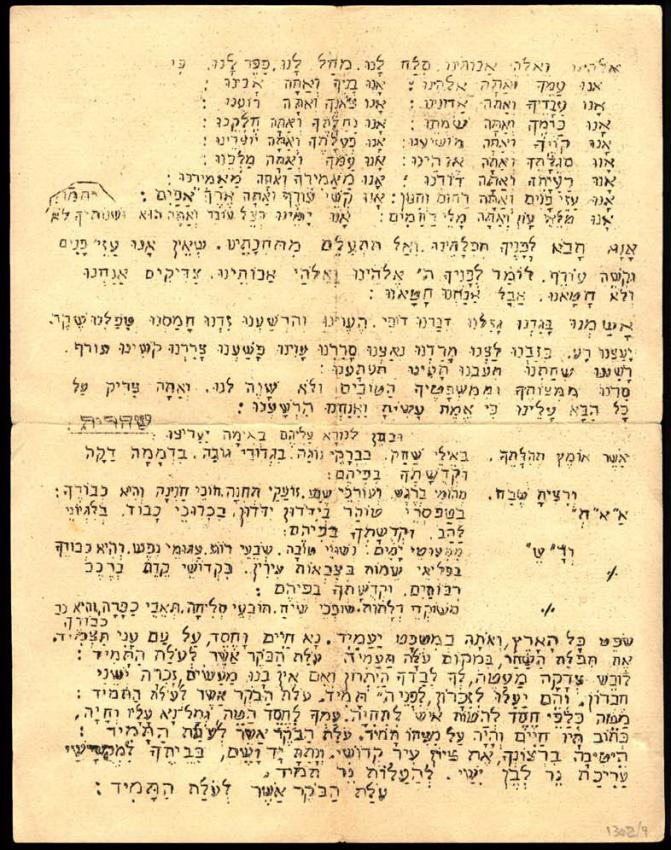
Yad Vashem Artifacts Collection
Gift of Martin Friedman, Norwich, England

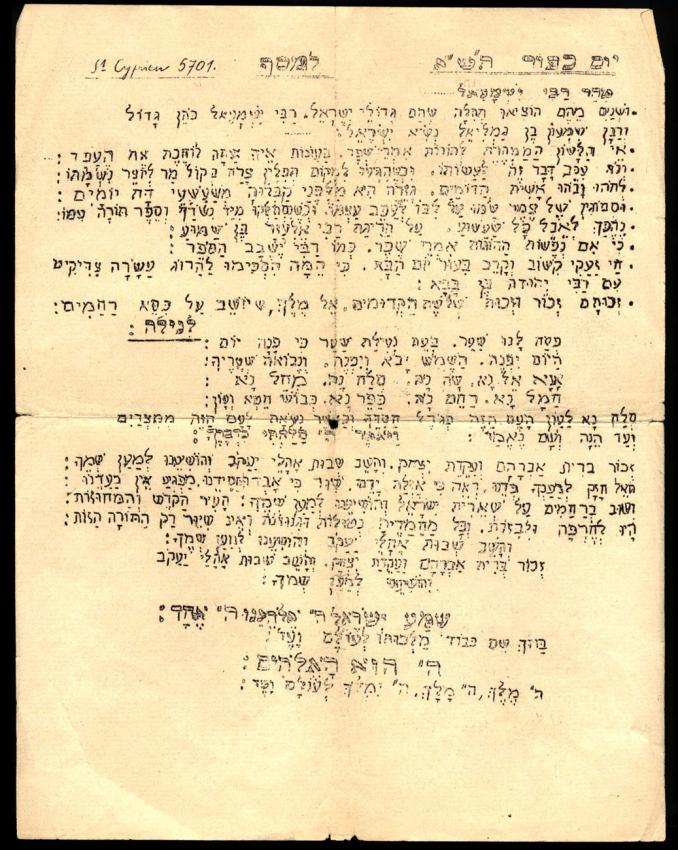
Yad Vashem Artifacts Collection
Gift of Martin Friedman, Norwich, England

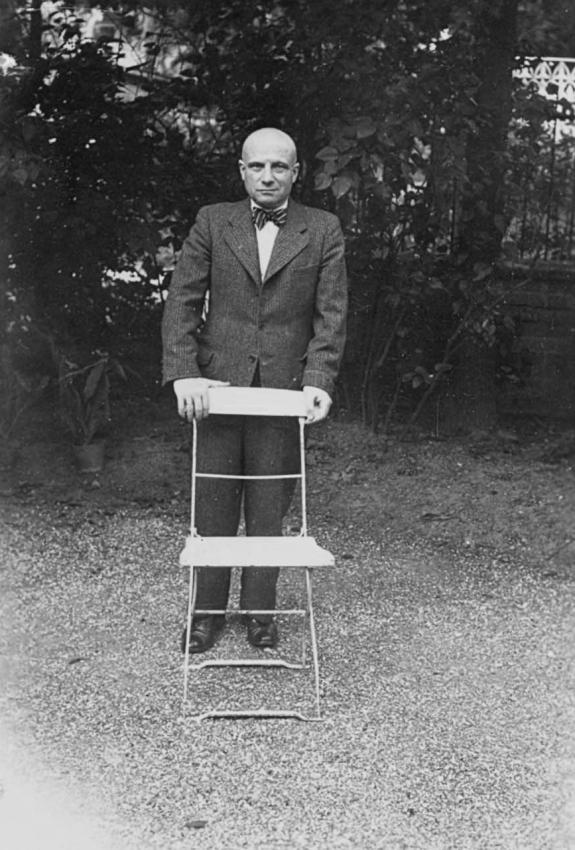

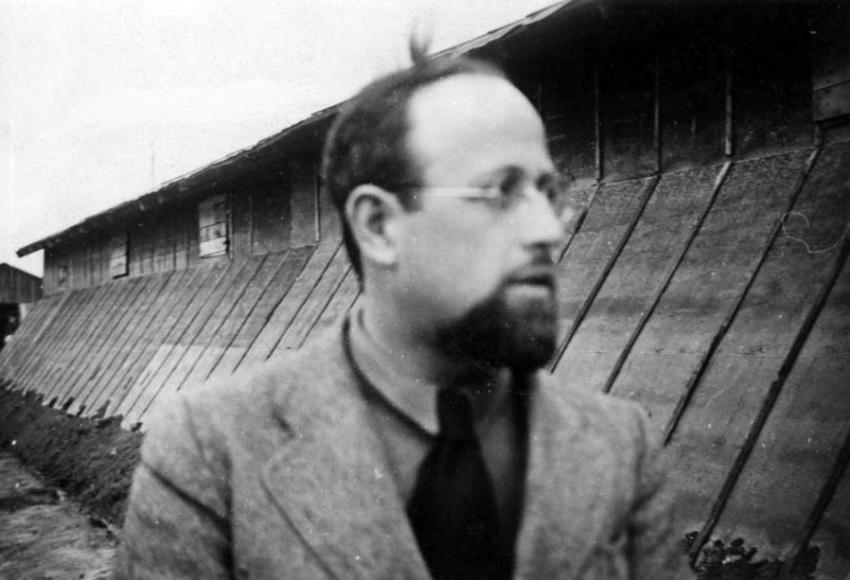

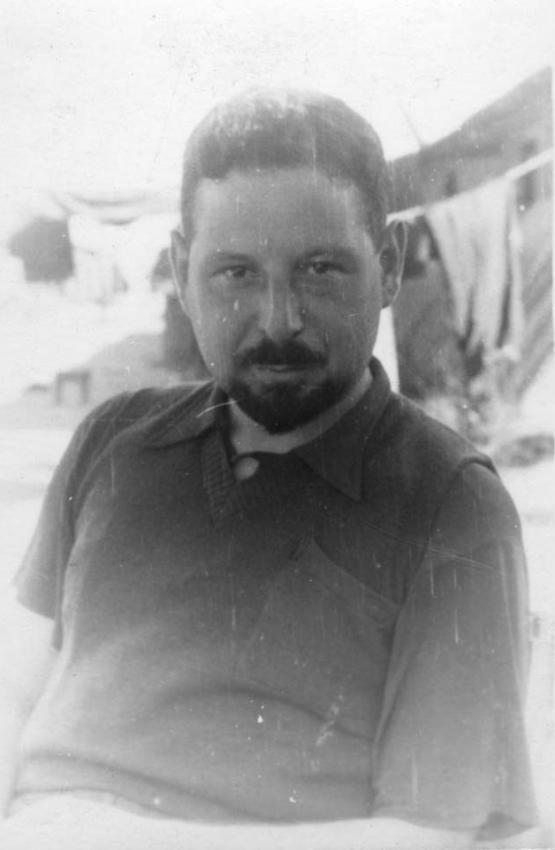

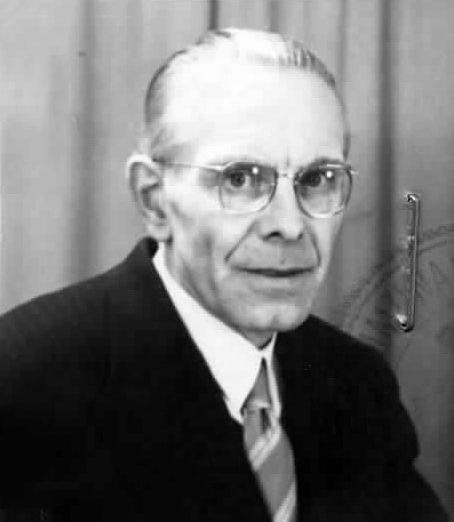

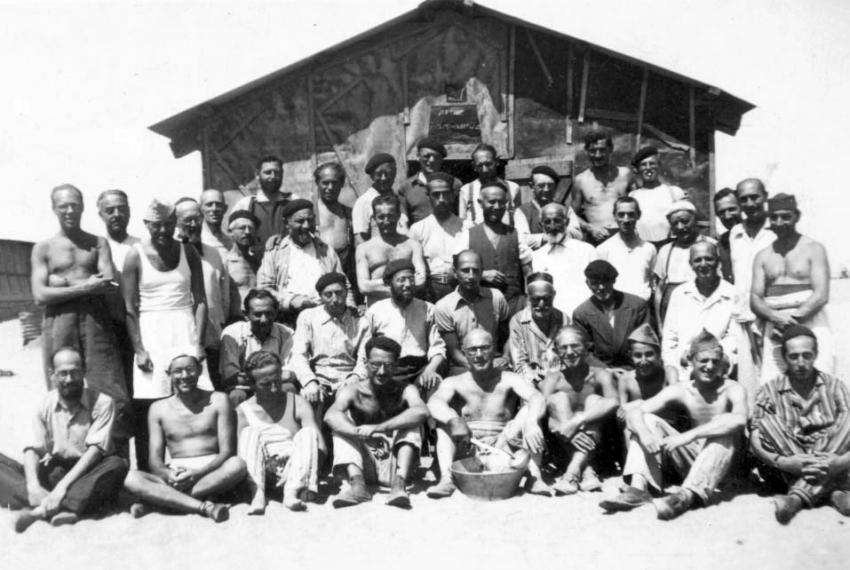

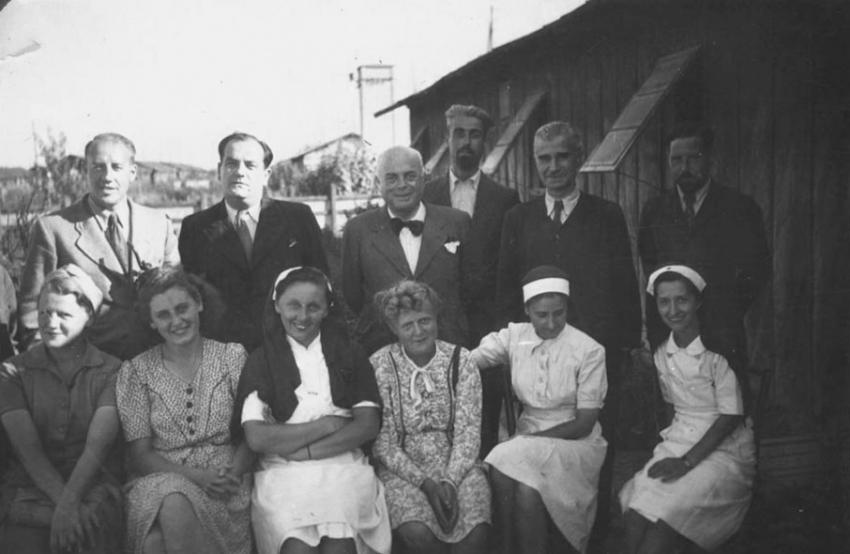

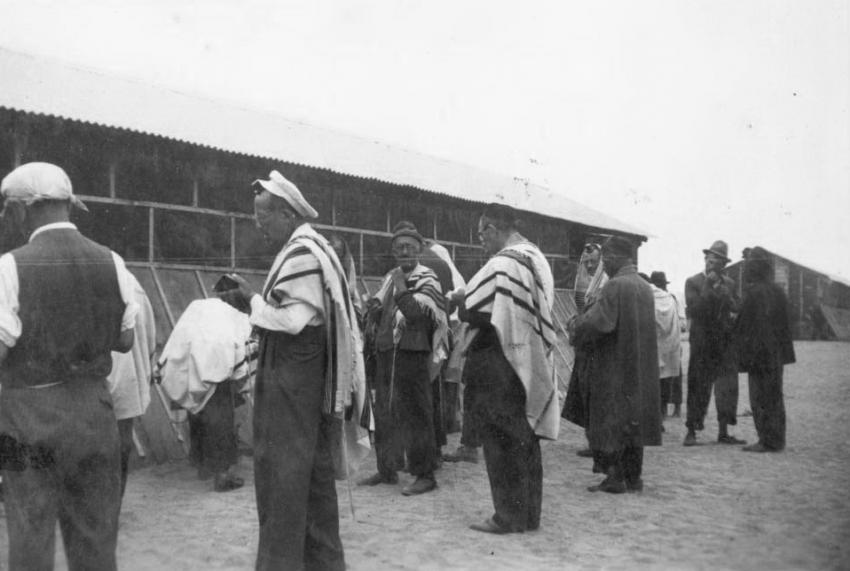

Sunday to Thursday: 09:00-17:00
Fridays and Holiday eves: 09:00-14:00
Yad Vashem is closed on Saturdays and all Jewish Holidays.
Entrance to the Holocaust History Museum is not permitted for children under the age of 10. Babies in strollers or carriers will not be permitted to enter.

Yad Vashem Artifacts Collection
Gift of Martin Friedman, Norwich, England


Yad Vashem Artifacts Collection
Gift of Martin Friedman, Norwich, England


Yad Vashem Artifacts Collection
Gift of Martin Friedman, Norwich, England















Pages of prayers from the Yom Kippur (Day of Atonement) liturgy were donated to Yad Vashem in 1973. The wartime mimeographed copy of handwritten pages was used in the St. Cyprien camp by Ludwig Friedmann, a German refugee who had escaped to Belgium close to the outbreak of WWII.
In May 1940, as the Germans were overrunning Belgium, Belgian authorities rounded up German and Austrian citizens, most of them Jews. The detainees were deported in a train bearing signs that announced to all – "Fifth Column". As the train passed through the stations it was pelted with stones and assorted objects; Belgian citizens prevented Red Cross officials from approaching the trains to provide water and first-aid. The detainees were sent across the border into southern France where they were held in the St. Cyprien camp.
The summary of Yom Kippur prayers serves as evidence of the efforts of the spiritual leadership in the French detainment camps to bolster the spirits of the deportees and to offer them succor in the shocking circumstances in which they found themselves.
We learn something of the situation surrounding the events of the Days of Awe (the period from the New Year through the Day of Atonement in the Jewish calendar) in the St. Cyprien camp in the fall of 1940 from the testimony of Rabbi Leon Ansbacher, a German refugee deported from Belgium to the camp:
Following the death of a descendant of the Hassidic Tzanz dynasty in the camp, the French Camp commandant, Le Clerc, who generally was cruel towards the prisoners, allowed the camp leaders to meet with the head of the Jewish community in nearby Perpignan to arrange for the burial in the town's Jewish cemetery.
Ansbacher relates how during the meeting, the community leader:
"…broke down in tears and cried like a child. He turned and opened a drawer. 'Here is my most precious possession – the Torah scroll that my father brought from Poland. I heard that you're having difficulty with prayers so I would like to give you this Torah.' – and to complete the miracle, as he lifted the Torah scroll what was beneath it? A Shofar – and we had been racking our brains over how we were going to blow the Shofar on the New Year…"
He later describes the prayers held in the camp for the New Year:
"…there on the earth of St. Cyprien what stands out as unforgettable was Rosh Hashanah (the Jewish New Year 5701 – on the 3rd and 4th of October, 1940). On that holiday morning we stood under a clear sky, thousands of people sharing a single fate, a simple choir led the congregation, then the "sermon". At that moment we all prayed as if from one soul, one voice rose to God from a thousand hearts. Those that took part thought of that and much more on that morning in October."
"… On the first day of the Rosh Hashanah the Commandant Le Clerc came to the ceremonial prayers. I spoke half in German, half in French, and from that day on he changed his attitude to us… on Yom Kippur that year… during the Neilah (closing) prayer I ensured that Le Clerc understood that the prisoners were "human beings" and no "fifth column" and that we should be treated with respect, and he began to behave with less cruelty… but by Sukkot (Holiday of Tabernacles - October 16th, 1940) the camp was flooded and we were subsequently sent to the Gurs camp."
The religious and social activities led by the spiritual leadership imprisoned in Saint Cyprien continued in the Gurs camp. With active assistance from outside the camp, Rabbi Ansbacher and others associated with him became part of an official committee, the CCA - Comité Central d'Assistance - that oversaw care for the sick, education, religious life and Torah learning. On Sabbaths and holidays there were communal prayers and often the Rabbi gave comforting sermons. Among those active in the CCA were Mordecai Ansbacher - brother of the Rabbi, Dr. Pinchas Rotschild and Louis Zuckerman, acquaintances from before the war.
In 1941, before the Passover holiday in the Gurs camp, Ansbacher relates how they put together a Passover Haggadah. Like the pages of prayers from Saint Cyprien, a number of mimeographed copies of the Haggadah were produced and one of these is preserved in the Yad Vashem Artifacts Collection. On the inside cover of the Haggadah is an illustration depicting Rabbi Ansbacher giving a sermon during the Yizkor service (memorial prayer for the departed) on the last day of Passover. The handwriting of the Saint Cyprien Yom Kippur prayers is identical to the handwriting of the Passover Haggadah that was written by Louis Zuckerman.
When the deportations to the death camps started in 1942, a new phase began in the camps and the prisoners understood that they were living on borrowed time. After Rabbi Ansbacher was accused of assisting in the escape of others, he was smuggled out of the camp. Others found ways to escape and made their way out of France. Ludwig Friedmann was captured while escaping, and in August 1942 he was deported to Auschwitz, where he was murdered. His son Martin preserved the Yom Kippur "Mahzor" that his father had prayed with.
The pages of prayers are tangible evidence of the efforts of camp prisoners to cling to their traditions, as a means of finding solace and spiritual fortitude in the appalling physical conditions of the French internment camps.
Yad Vashem Artifacts Collection
Gift of Martin Friedman, Norwich, England

Thank you for registering to receive information from Yad Vashem.
You will receive periodic updates regarding recent events, publications and new initiatives.

"The work of Yad Vashem is critical and necessary to remind the world of the consequences of hate"
Paul Daly
#GivingTuesday
Donate to Educate Against Hate


Worldwide antisemitism is on the rise.
At Yad Vashem, we strive to make the world a better place by combating antisemitism through teacher training, international lectures and workshops and online courses.
We need you to partner with us in this vital mission to #EducateAgainstHate
The good news:
The Yad Vashem website had recently undergone a major upgrade!
The less good news:
The page you are looking for has apparently been moved.
We are therefore redirecting you to what we hope will be a useful landing page.
For any questions/clarifications/problems, please contact: webmaster@yadvashem.org.il
Press the X button to continue



